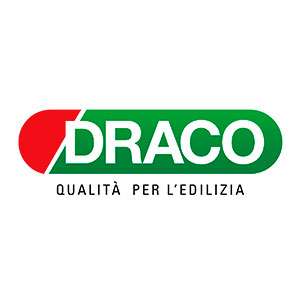Experimental study on penetration of bentonite grout through granular soils
Permeation grouting using bentonite grouts is one of the effective methods to improve the engineering properties of granular soils.
Experimental study on penetration of bentonite grout through granular soils
ABSTRACT
Permeation grouting using bentonite grouts is one of the effective methods to improve the engineering properties of granular soils. However, the low penetrability of bentonite grouts into soils limits their practical application in permeation grouting. This study presents a new approach to control the penetration length of bentonite grouts through granular soils using an ionic additive, sodium pyrophosphate (SPP). It is hypothesized that the chemical modification changes both rheological and physicochemical properties of the bentonite grout, and thus affects its penetration length through soils. The rheological properties (yield stress and apparent viscosity) of bentonite grouts with weight ratios (ratio of water to dry bentonite, W/B) of 19, 12.3, 9, and 7.3 were controlled by the addition of 1%–4% SPP by weight of dry bentonite. The bentonite grouts were also injected into sand columns prepared at various experimental conditions to evaluate the effect of each experimental parameter on their penetration lengths. The results show that the penetration length of bentonite grouts decreases with a decrease in W/B ratio and an increase in yield stress and apparent viscosity. Moreover, the penetration length increases with the increase of the normalized effective grain size and injection pressure, but the increase of fines content reduces the penetration length of the grouts. While the existing analytical equation produces good agreement with the measured penetration lengths for the grouts having high yield stress (>26 Pa), it significantly overestimates the penetration lengths of the SPP modified bentonite grouts due to filtration (especially, the grouts having low yield stress and low W/B ratios). Therefore, a new empirical correlation is proposed to predict the penetration length of the bentonite grouts based on filtration and rheological blocking.
Keywords: permeation grouting, penetration length, bentonite grout, yield stress, apparent viscosity, sodium pyrophosphate
References
Abend S, Lagaly G. 2000. Sol-gel transitions of sodium montmorillonite dispersions. Applied Clay Science 16: 201-227 CrossRef.
Akbulut S, Saglamer A. 2002. Estimating the groutability of granular soils: a new approach. Tunnelling and Underground Space Technology 17(4): 371-380 CrossRef.
ASTM. 2006a. Standard test method for maximum index density and unit weight of soils using a vibratory table. ASTM standard D 4253-00(2006). In Annual book of ASTM standards, Vol. 04.08. American Society for Testing and Materials (ASTM) International, West Conshohocken, Pa.
ASTM. 2006b. Standard test method for minimum index density and unit weight of soils and calculation of relative density. ASTM standard D 4254-00(2006)e1. In Annual book of ASTM standards, Vol. 04.08. American Society for Testing and Materials (ASTM) International, West Conshohocken, Pa.
ASTM. 2007. Standard test method for particle size analysis of soils. ASTM standard D 422-63(2007). In Annual book of ASTM standards, Vol. 04.08. American Society for Testing and Materials (ASTM) International, West Conshohocken, Pa.
ASTM. 2009. Standard test method for laboratory preparation of chemically grouted soil specimens for obtaining engineering parameters. ASTM standard D 4320/D 4320M-09. In Annual book of ASTM standards, Vol. 04.08. American Society for Testing and Materials (ASTM) International, West Conshohocken, Pa.
ASTM. 2010. Standard test method for specific gravity of soil solids by water pycnometer. ASTM standard D 854-10. In Annual book of ASTM standards, Vol. 04.08. American Society for Testing and Materials (ASTM) International, West Conshohocken, Pa.
ASTM. 2011. Standard practice for classification of soils for engineering purposes (Unified Soil Classification System). ASTM standard D2487. American Society for Testing and Materials, West Conshohocken, Pa.
Axelsson, M., and Gustafson, G. 2007. Grouting with high water/solid-ratios – literature and laboratory study. Report No. 2007:5. Department of Civil and Environmental Engineering, Division of GeoEngineering, Chalmers University of Technology, Göteborg, Sweden.
Axelsson M, Gustafson G, Fransson Å. 2009. Stop mechanism for cementitious grouts at different water-to-cement ratios. Tunnelling and Underground Space Technology 24: 390-397 CrossRef.
Brandenburg U, Lagaly G. 1988. Rheological properties of sodium montmorillonite dispersions. Applied Clay Science 3: 263-279 CrossRef.
Burwell EB. 1958. Cement, clay grouting of foundations: practice of the corps of engineering. Journal of the Soil Mechanics and Foundation Division, ASCE 84(1551): 1-22 .
Chapuis RP. 1990. Sand-bentonite liners: predicting permeability from laboratory tests. Canadian Geotechnical Journal 27(1): 47-57 Abstract, ISI. Abstract
Chapuis RP. 2004. Predicting the saturated hydraulic conductivity of sand and gravel using effective diameter and void ratio. Canadian Geotechnical Journal 41(5): 787-795 Abstract, ISI. Abstract
Clarke, J.P. 2008. Investigation of time-dependent rheological behavior of sodium pyrophosphate-bentonite suspensions. Thesis, Purdue University, West Lafayette, Ind.
Coussot, P. 2005. Rheometry of pastes, suspensions and granular materials: applications in industry and environment. Wiley, New York. 10.1002/0471720577. CrossRef
De Paoli, B., Bosco, B., Granta, R., and Bruce, D.A. 1992a. Fundamental observations on cement based grouts: traditional materials. In Proceedings of Grouting, Soil Improvement and Geosynthetics, New Orleans, La., 25–28 February. GSP 40. ASCE. pp. 474–495.
El Mohtar CS, Bobet A, Santagata MC, Drnevich VP, Johnston CT. 2013. Liquefaction mitigation using bentonite suspensions. Journal of Geotechnical and Geoenvironmental Engineering 139(8): 1369-1380 CrossRef.
El-Khattab, M.M. 2013. Post-permeation stability of modified bentonite suspensions under increasing hydraulic gradients. Thesis, University of Texas at Austin, Austin, Tex.
Gustafson G, Stille H. 1996. Prediction of groutability from grout properties and hydrogeological data. Tunnelling and Underground Space Technology 11: 325-332 CrossRef, ISI.
Haug MD, Wong LC. 1992. Impact of molding water content on hydraulic conductivity of compacted sand bentonite. Canadian Geotechnical Journal 29(2): 253-262 Abstract, ISI. Abstract
Hazirbaba, K. 2005. Pore pressure generation characteristics of sands and silty sands: a strain approach. Ph.D. dissertation, The University of Texas at Austin, Austin, Tex.
Herzig JP, Leclerc DM, Le Goff P. 1970. Flow of suspensions through porous media. Application to deep filtration. Industrial and Engineering Chemistry 62(5): 8-35 CrossRef.
Hwang, H. 2010. The effects of prehydration on hydraulic conductivity of SBMs. Thesis, The University of Texas at Austin, Austin, Tex.
Hwang, H., Yoon, J., Rugg, D.A., and El Mohtar, C.S. 2011. Hydraulic conductivity of bentonite grouted sand. In Proceedings of the Geo-Frontiers, Dallas, Tex., 13–16 March. pp. 1372–1381. 10.1061/41165(397)141. CrossRef
Jancsecz, S., and Steiner, W. 1994. Face support for a large mix-shield in heterogeneous ground conditions. In Tunneling ’94. Mining and Metallurgy and British Tunneling Society. Chapman and Hall, London. pp. 531–549. 10.1007/978-1-4615-2646-9_32. CrossRef
Jefferis, S.A. 1992. Slurries and grouts In Construction materials reference book. Edited by K. Doran. Butterworth-Heinemann, Oxford.
Kazemian S, Huat BBK. 2009. Assessment and comparison of grouting and injection methods in geotechnical engineering. European Journal of Science Research 27(2): 234-247 .
Kim J-S, Lee I-M, Jang J-H, Choi H. 2009. Groutability of cement-based grout with consideration of viscosity and filtration phenomenon. International Journal for Numerical and Analytical Methods in Geomechanics 33(16): 1771-1797 CrossRef.
Markou IN, Atmatzidis DK. 2002. Properties and performance of a pulverized fly ash grout. Journal of Geotechnical and Geoenvironmental Engineering 128: 682-691 CrossRef.
Ozgurel HG, Vipulanandan C. 2005. Effect of grain size and distribution on permeability and mechanical behavior of acrylamide grouted sand. Journal of Geotechnical and Geoenvironmental Engineering 131(12): 1457-1465 CrossRef.
Raffle, J.F., and Greenwood, D.A. 1961. The relation between the rheological characteristics of grouts and their capacity to permeate soil. In Proceedings of the 5th International Conference of Soil Mechanics and Foundation Engineering, Paris, 17–22 July. Vol. 2, p. 789.
Rege SD, Fogler HS. 1988. A network model for deep bed filtration of solid particles and emulsion drops. AIChE Journal 34(11): 1761-1772 CrossRef, ISI.
Rugg, D.A., Yoon, J., Hwang, H., and El Mohtar, C.S. 2011. Undrained shearing properties of sand permeated with a bentonite suspension for static liquefaction mitigation. In Proceedings of the Geo-Frontiers, Dallas, Tex., 13–16 March. pp. 677–686. 10.1061/41165(397)70. CrossRef
Saada Z, Canou J, Dormieux L, Dupla JC, Maghous S. 2005. Modelling of cement suspension flow in granular porous media. International Journal for Numerical and Analytical Method in Geomechanics 29: 691-711 CrossRef, ISI.
Santagata, M.C., and Santagata, E. 2003. Experimental investigation of factors affecting the injectability of microcement grouts. In Proceedings of the 3rd International Specialty Conference on Grouting and Ground Treatment, 10–12 February. ASCE, pp. 1221–1234. 10.1061/40663(2003)70. CrossRef
Santamarina JC, Klein KA, Wang YH, Prencke E. 2002. Specific surface: determination and relevance. Canadian Geotechnical Journal 39(1): 233-241 Abstract, ISI. Abstract
Tchillingarian G. 1952. Study of the dispersing agents. Journal of Sedimentary Petrology 22: 229-233 CrossRef.
Yoon, J. 2011. Application of pore fluid engineering for improving the hydraulic performance of granular soils. Ph.D. dissertation, the University of Texas at Austin, Austin, Tex.
Yoon J, El Mohtar CS. 2013a. Disturbance effect on time dependent yield stress measurement of bentonite suspensions. Geotechnical Testing Journal 36(1): 78-87 CrossRef.
Yoon J, El Mohtar CS. 2013b. Groutability of granular soils using sodium pyrophosphate modified bentonite suspensions. Tunnelling and Underground Space Technology 37: 135-145 CrossRef.
Yoon J, El Mohtar CS. 2013c. Dynamic rheological properties of sodium pyrophosphate-modified bentonite suspensions for liquefaction mitigation. Clays and Clay Minerals 61(4): 319-327 CrossRef.
Yoon J, El Mohtar CS. 2014a. Groutability of granular soils using bentonite grout based on filtration model. Transport in Porous Media 102(3): 365-385 CrossRef.
Yoon J, El Mohtar CS. 2014b. Rheological properties of sodium pyrophosphate modified bentonite suspensions for seepage control. Engineering Geology 179(4): 32-40 CrossRef.

Impermeabilizzazione
Con questo TOPIC si è voluto raccogliere tutti gli articoli che si occupano del tema, delicato, dell'impermeabilizzazione.
Membrane bentonitiche
Le membrane bentonitiche, innovative nel settore dell'impermeabilizzazione, sono fatte di argilla espansiva e offrono una barriera efficace contro acqua e umidità. Questa soluzione ecocompatibile si auto-ripara, riempiendo crepe e perforazioni, ideale per costruzioni esposte a variazioni climatiche. Facili da installare, rappresentano una scelta sostenibile per progetti che richiedono affidabilità e rispetto per l'ambiente.
